NRF24L01+ 2.4GHz RF Transceiver Module
NRF24L01+ Radio module (transmitter and receiver) operating in 2.4 GHz band with SPI communication interface. Powered by 1.9 V – 3.6 V.
50.00 EGP
Buy NowProduct Description: nRF24L01+ 2.4GHz radio module – THT transceiver.
Radio module (transmitter and receiver) operating in 2.4 GHz band with SPI communication interface. Powered by 1.9 V – 3.6 V, the outputs are goldpin connectors. It has a built-in antenna and FIFO hardware queues. Max range up to 100m.
KEY FEATURES OF nRF24L01+ 2.4GHz RF WIRELESS MODULE:
- 2.4GHz Operating Band
- 100 meters Operating Range
- 125 RF Channels
- 250Kbps – 2Mbps Data Rates
- 3.3V Operation
The modules operate in the 2.4GHz band at data rates of 250Kbps, 1Mbps or 2Mbps and at a range of up to 100 meters. Max operating current is < 14mA.The module can use up to 125 different channels spaced 1Mhz apart which cover the frequency spectrum from 2.400GHz to 2.525GHz. This gives the possibility to have a network composed of up to 125 independently working transceivers. Each channel can have up to 6 addresses, or each module can communicate with up to 6 other modules at the same time. Networks can be configured as Star and Tree networks.
The module operates at 1.9V – 3.6V, but the I/O is 5V tolerant, so it can be directly connected to a 5V Arduino or other microcontroller without using any logic level converters. The module power can be driven off the 3.3V power pin, or it can be used with our adapter module below which takes 5V in and has a built-in 3.3V regulator. The adapter also provides pin-out labels, power LED and power supply filtering.
The module uses 5 signal pins in addition to the power and ground pins. Communications with the module use the SPI bus which is composed of 3 pins (MOSI, MISO, SCK). These pins connect to the same SPI pins on the microcontroller. The other 2 pins (CSN, CE) that are used for setting the module into standby/active mode as well as switching between transmit or command mode and these can be attached to any 2 digital pins on the microcontroller. In addition, there is an interrupt pin which isn’t typically used.
If a longer range is required, our NRF24L01+PA+LNA w/ antenna module can reach up to 1100 meters.
The module has a 2×4-pin header on the assembly. See pic for layout as the boards may not have the pins labeled.
2 x 4 Header
- GND – Ground. Connect to ground on microcontroller
- VCC – 1.9 – 3.6V. Typically connected to 3.3V on the microcontroller unless adapter module is being used.
- CE – Chip Enable. Sets whether module is in RX or TX mode.
- CSN – SPI Chip Select
- SCK – SPI Clock
- MOSI – SPI Slave Data Input
- MISO – SPI Slave Data Output
- IRQ – Maskable Interrupt
Specification of the nRF24L01 radio module.
- Power supply voltage: 1.9 V – 3.6 V
- Power consumption: 11 mA (at 0 dBm input power)
- Frequency of operation: 2.4GHz
- Communication interface: SPI
- Transmission speed: 250 kbps, 1 Mbps or 2 Mbps
- GFSK modulation
- 32-bit FIFO records for transmitter and receiver
- Automatic transmission of packets
- Dimensions: 30 x 16 mm
- Mounting: threaded – raster 2.54 ( goldpin connectors )
Our offer includes female goldpin strips and cables which enable connecting the module to a dedicated PCB, contact board or set (e.g. Arduino, Arduino Nano or STM32Discovery).
Wireless network communication via WiFi has long since ceased to be the domain of computers, mobile devices and top-of-the-line professional equipment. Today, even inexpensive, mass-produced gadgets, as well as devices built by electronics enthusiasts at home, connect to the Internet. There is no denying that probably the strongest influence on the popularization of WiFi among macros had (and still have) radio modules based on Nordic Semiconductor chips. The nRF24L01+ radio module is particularly popular, both because of its very attractive price and its really impressive functional capabilities.
All in one chip
The heart of this WiFi module is a small chip marked nRF24L01+, integrating all the blocks necessary to establish radio communication with routers, computers or mobile devices. In addition to a sensitive receiver with adjustable gain and a transmitter with a digitally tunable amplifier, the structure of the nRF24L01+ chip includes a frequency synthesizer, RF filters and a GFSK modulator and demodulator, as well as the digital blocks necessary to support the WiFi protocol: radio part controller, memory divided into registers (they provide the ability to configure the operating parameters of the system and read the current status), FIFO buffers for transmitter and receiver and SPI interface, allowing easy connection to any microcontroller or FPGA chip.
Excellent link balance and simple connection
The nRF24L01+ transmitter can operate with output power from -18 dBm up to 0 dBm (with step set in 6 dBM steps), while the transmitter offers sensitivity up to -94 dBm (at minimum transmission speed of 250 kbps). These parameters allow to achieve a range up to 100 meters, depending on the environment and the presence of possible obstacles between the nRF24L01+ module and the cooperating device. What is important, with 12 dBm sensitivity lower by 12 dBm, the system can reach transmission speed up to 2 Mbps. The transceiver’s operational stability is ensured by a built-in voltage regulator, operating in the input voltage range from 1.9 to 3.6 V. A significant facilitation is the presence of built-in microstrip antenna, made in the form of a path on the PCB of the module – thanks to this, it is not necessary to use external antennas, which is the case with more expensive modules. The connection of the nRF24L01+ radio module with a control microcontroller is made via a 2×4 goldpin connector in a standard 2.54 mm (100 mils) raster. The small external dimensions of the PCB (only 30 x 16 mm) allow the transceiver to be built into almost any device – that’s why the nRF24L01+ radio module is popular among small mobile robots.
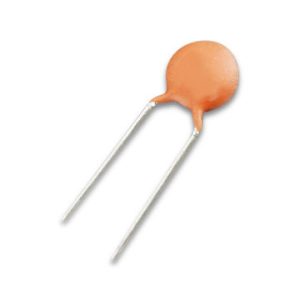







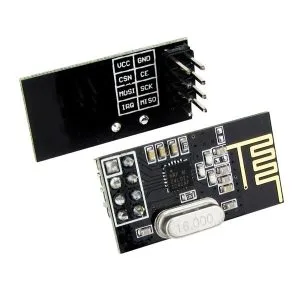
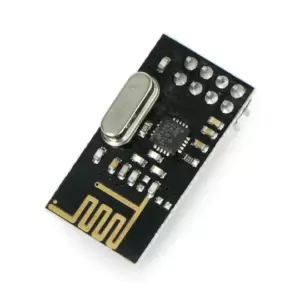
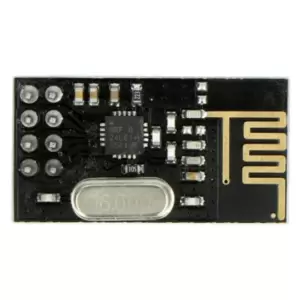
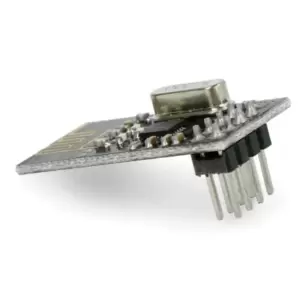
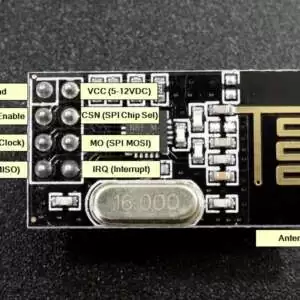
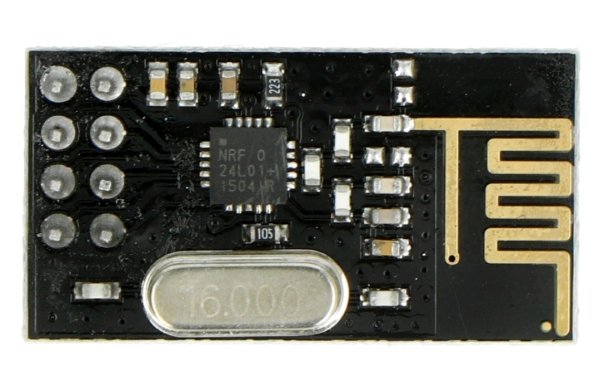






Reviews
There are no reviews yet.